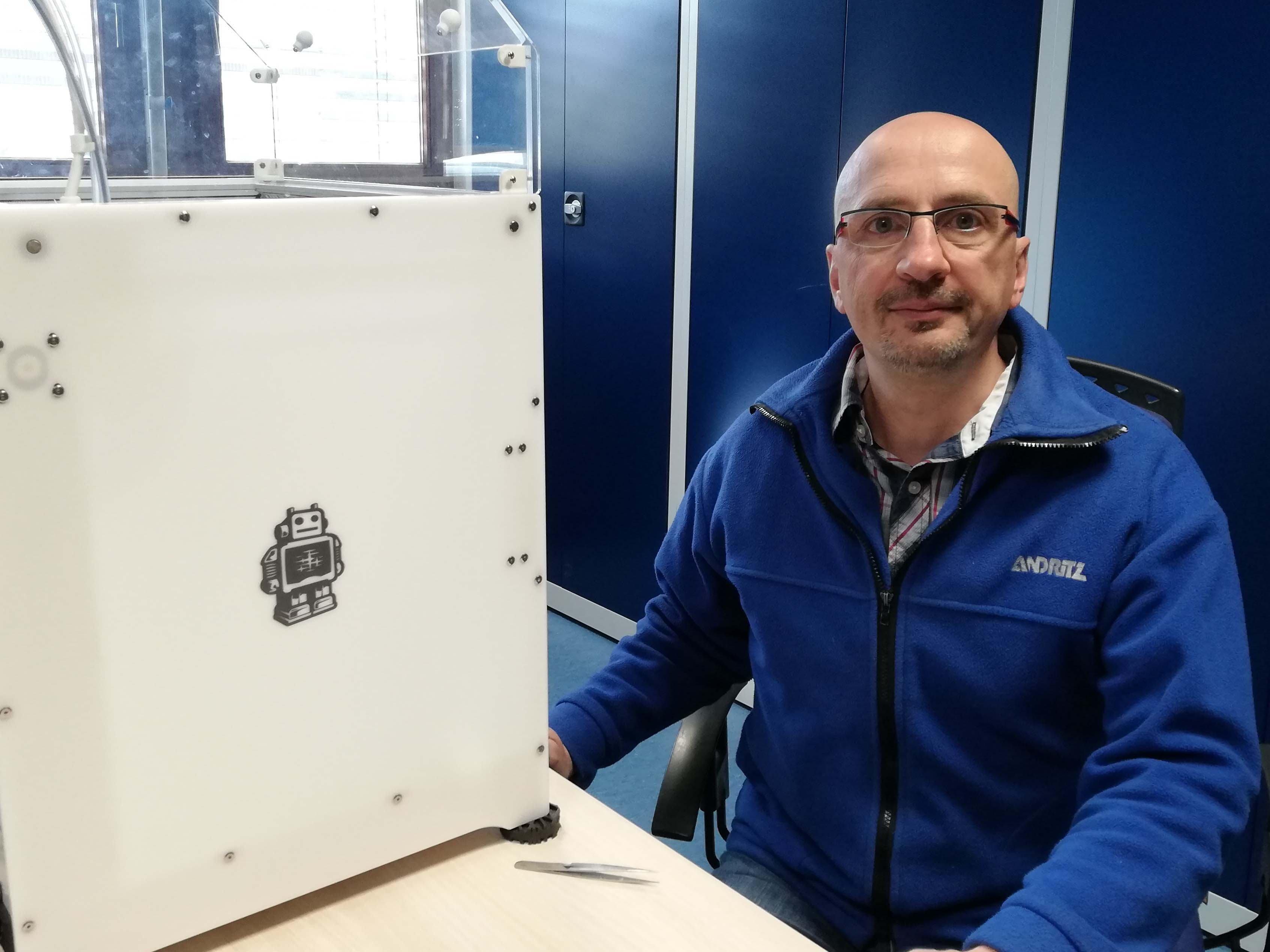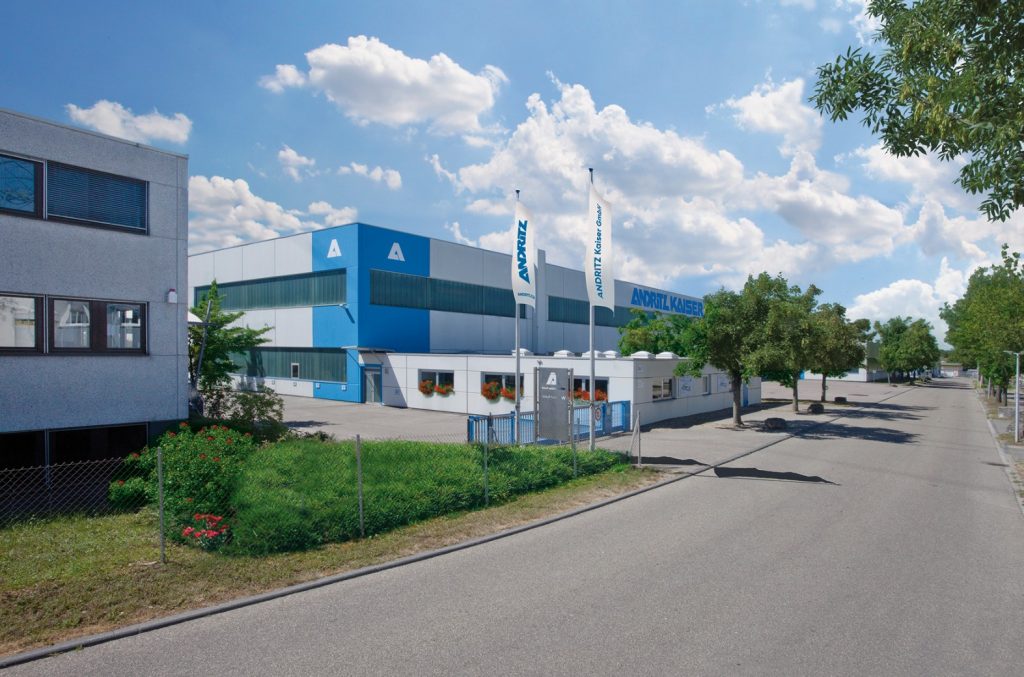
As product development manager at ANDRITZ KAISER GmbH in Bretten, additive technologies have fascinated Paolo Matassoni early on. In their application, he has always explored new roads. Today, his team uses the high degree of design freedom in construction and in material design for optimized component functions. In this interview, he talks about enthusiastic junior employees, new material combinations, and his expectations for additive processes in the year 2030.

Could you provide us with a short introduction to ANDRITZ KAISER?
Paolo Matassoni: With pleasure. Our company is a globally active systems supplier of punching and forming technology within the range of 630 to 23,000 kilonewton. The company’s beginnings go back to the year 1945. Since 2004, we belong to the Austrian ANDRITZ GROUP which employs more than 29,000 people worldwide and has generated a revenue of six billion Euro in the areas of hydro, pulp & paper, metals, and separation. What matter to us is supporting junior staff who we encourage to form groups at ANDRITZ KAISER so that they support each other and bring their zeitgeist and young way of thinking. We want them to be excited for their tasks – and we have been quite successful at it.
Which role does additive manufacturing (AM) play in this?
Matassoni: Of course, this thrills young people. However, this is only one aspect. For about ten years, we have been using additive technologies. Back then, I got to know laser surface cladding at a fair, and I was fascinated. Shortly after that, we came into contact with suppliers of powder surface cladding in the region. We then got started and experimented with technologies and material combinations. In the beginning, metallurgists were shaking their heads. But success proved us right. Today, we are using hybrid metal materials in additive manufacturing that are not even mentioned in technical literature. We are holding on to that researcher spirit. With AM, we can travel entirely new roads in construction and leave our comfort zone as constructing engineers. There are colleagues ahead of us all, paving the road for the rest. We support this, and we make sure that there are alternating teams entering unchartered waters.
As users, where do you see advantages in AM construction and manufacturing?
Matassoni: At our company, each component has an evolution matrix. AM allows us to promote that evolution instead of just accepting the status quo. If you walk through nature with open eyes, you will see perfect constructions. These can be imitated with AM technologies. In order to hone our bionic methods, we send all constructing engineers to training courses with Professor Claus Mattheck at the Karlsruhe Institute for Technology (KIT). He teaches them to actually see nature with open eyes. Another aspect is the freedom in material design. Laser technologies join materials in a micro-invasive way without putting stress on the original materials. We started out with ball sockets for press joints. Today, we are implementing additively manufactured metal and plastics parts in series. Although only high-strength, fiber-reinforced plastics are a match for those forces arising in our punching and forming automats. We are talking here at least 63 tons and up to 2500 tons! It does not immediately bring plastics to mind. However, anyone addressing the right questions to the component will find the right answers. This way, we manage to minimize vibrations and shock waves in the punching and forming process – and thus raise process quality. This is possible through a free construction process without 2D drawings in which we have just begun to consider complex component groups for the sole reason of AM existing. AM makes the unthinkable possible.
How are your AM activities strategically anchored in the ANDRITZ GROUP?
Matassoni: There is a platform where all ANDRITZ companies are registered with their AM systems, application focus, as well as their contact persons. This structure helps with our in-house knowledge transfer and with utilization of our systems. We nurture this exchange in order to optimally use the technology and to open up their future potentials together.
How do you imagine a typical AM process chain in the year 2030?
Matassoni: There are two levels. Construction will be done with artificial intelligence optimizing components iteratively. I think we will reach a state in 2030 where only forces, interfering contours, and functions will be entered on the semantic level – and then, software will automatedly generate construction out of that. The second level is material design. We will see a new mix of materials which will, together with optimized construction, lead to a higher component quality. Literature cannot keep up with the speed of innovations. Already today, a lot more has become possible than is generally known; and progress in laser technology has sped up this development as well. It is possible that this will also reduce post-processing effort a lot in future process chains. Automated feeder units will allow us to additively build up, to integrate structures into component groups or build them around other components. And AM will become a mainstay in service and spare parts logistics: in the future, we will be sending out data sets instead of spare parts.
Final question: what were your goals in joining the Additive Manufacturing Association?
Matassoni: As it is so often in life, it was a coincidence. A colleague of mine had accepted an invitation to a symposium with the Association, then he had to call it off on short notice and I took his place. Once there, I realized that all participating companies have the same questions and topics that we have. Material requirements, testing procedures, and standards are all very much behind the developments. In the Additive Manufacturing Association, these problems were addressed openly, and here we can work together with like-minded people in order to solve them.
About 150 companies and research institutes collaborate under the roof of the VDMA (German Mechanical
Engineering Industry Association) in the Additive Manufacturing Association. System manufacturers, suppliers of components and materials, industrial users from the metals and plastics sectors, services providers for software, manufacturing, and finishing as well as researchers all have a common goal: the industrialization of additive manufacturing technologies.